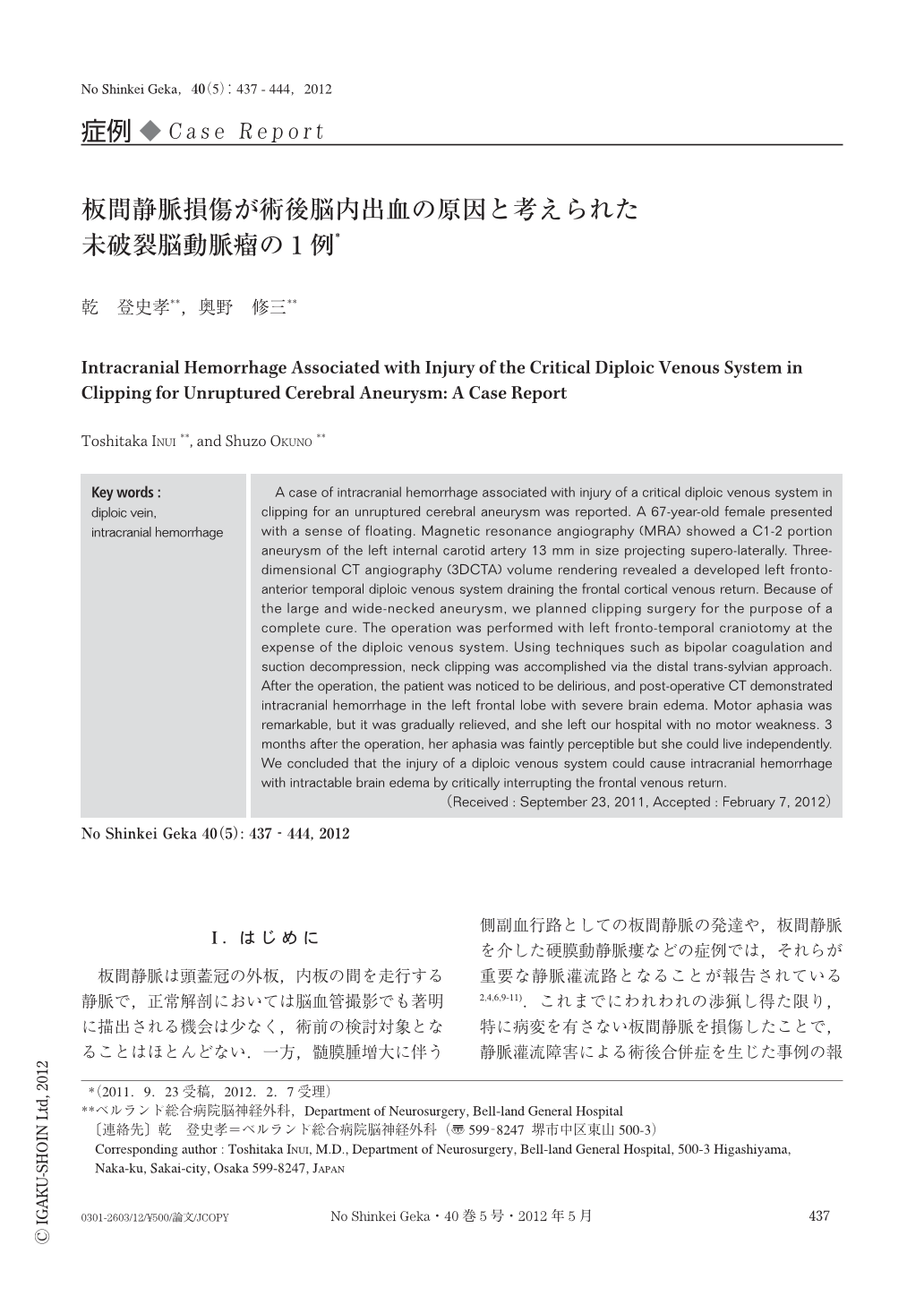Japanese
English
- 有料閲覧
- Abstract 文献概要
- 1ページ目 Look Inside
- 参考文献 Reference
Ⅰ.はじめに
板間静脈は頭蓋冠の外板,内板の間を走行する静脈で,正常解剖においては脳血管撮影でも著明に描出される機会は少なく,術前の検討対象となることはほとんどない.一方,髄膜腫増大に伴う側副血行路としての板間静脈の発達や,板間静脈を介した硬膜動静脈瘻などの症例では,それらが重要な静脈灌流路となることが報告されている2,4,6,9-11).これまでにわれわれの渉猟し得た限り,特に病変を有さない板間静脈を損傷したことで,静脈灌流障害による術後合併症を生じた事例の報告はない.今回,発達したanterior diploic venous systemを,未破裂脳動脈瘤手術における前頭側頭開頭施行のため,やむを得ず切断し,術後脳静脈灌流障害によると思われる強い脳浮腫を伴う脳内出血を合併した症例を経験したので,文献的考察を加えて報告する.
A case of intracranial hemorrhage associated with injury of a critical diploic venous system in clipping for an unruptured cerebral aneurysm was reported. A 67-year-old female presented with a sense of floating. Magnetic resonance angiography (MRA) showed a C1-2 portion aneurysm of the left internal carotid artery 13 mm in size projecting supero-laterally. Three-dimensional CT angiography (3DCTA) volume rendering revealed a developed left fronto-anterior temporal diploic venous system draining the frontal cortical venous return. Because of the large and wide-necked aneurysm,we planned clipping surgery for the purpose of a complete cure. The operation was performed with left fronto-temporal craniotomy at the expense of the diploic venous system. Using techniques such as bipolar coagulation and suction decompression,neck clipping was accomplished via the distal trans-sylvian approach. After the operation,the patient was noticed to be delirious,and post-operative CT demonstrated intracranial hemorrhage in the left frontal lobe with severe brain edema. Motor aphasia was remarkable,but it was gradually relieved,and she left our hospital with no motor weakness. 3 months after the operation,her aphasia was faintly perceptible but she could live independently. We concluded that the injury of a diploic venous system could cause intracranial hemorrhage with intractable brain edema by critically interrupting the frontal venous return.

Copyright © 2012, Igaku-Shoin Ltd. All rights reserved.


